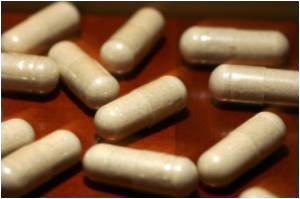In patients with acute bacterial skin and skin structure infections, treatment with new antibiotic tedizolid phosphate was no worse than in efficacy to the antibiotic linezolid, say researchers.

Philippe Prokocimer, M.D., of Trius Therapeutics Inc., San Diego, and colleagues conducted a study to establish the noninferiority of tedizolid phosphate vs. linezolid in treating ABSSSIs and compare the safety of the 2 agents. The phase 3, randomized trial was conducted from August 2010 through September 2011 at 81 study centers in North America, Latin America, and Europe. The intent-to-treat analysis set consisted of data from 667 adults ages 18 years or older with ABSSSIs treated with tedizolid phosphate (n = 332) or linezolid (n = 335). Patients were randomized to a 200 mg once daily dose of oral tedizolid phosphate for 6 days or 600 mg of oral linezolid every 12 hours for 10 days. The primary efficacy outcome was early clinical response at the 48- to 72-hour assessment (no increase in lesion surface area from baseline and oral temperature of 99.7°F or less, confirmed by a second temperature measurement within 24 hours). A 10 percent noninferiority margin was predefined.
The researchers found in the primary efficacy intent-to-treat (ITT) analysis, the response rates at the 48- to 72-hour assessment were 79.5 percent of 332 patients in the tedizolid phosphate group and 79.4 percent of 335 patients in the linezolid group. Sustained clinical treatment response rates at the end of treatment (day 11) were similar in the tedizolid phosphate and linezolid groups in the ITT analysis set (69.3 percent vs. 71.9 percent, respectively). Investigator-assessed clinical treatment response at the post-therapy evaluation (PTE) visit was also similar in the tedizolid phosphate and linezolid groups in the ITT analysis set (85.5 percent vs. 86.0 percent, respectively).
"Of particular interest are the similar treatment response rates in the tedizolid phosphate group (78.0 percent) and in the linezolid group (76.1 percent) in the sensitivity analysis that was based on the Foundation for the National Institutes of Health recommended outcome (≥ 20 percent decrease in lesion area)," the authors write.
Also, the researchers found that the clinical response rate at the PTE (7 to 14 days after completing therapy) was high (85 percent) for 178 patients infected with MRSA and similar in both the tedizolid phosphate and linezolid treatment groups.
Treatment-emergent adverse events (mostly mild or moderate) occurred in 40.8 percent of patients in the tedizolid phosphate group and 43.3 percent of patients in the linezolid group. The overall incidence of serious adverse events was low and similar between groups.
Advertisement
(JAMA. 2013;309(6):559-569; Available pre-embargo to the media at http://media.jamanetwork.com)
Editor's Note: Trius Therapeutics funded and conducted the trial. Please see the article for additional information, including other authors, author contributions and affiliations, financial disclosures, etc.
Advertisement
Shira Doron, M.D., and Helen W. Boucher, M.D., of Tufts Medical Center and Tufts University School of Medicine, Boston, comment on the findings of this study in an accompanying editorial.
"In the study by Prokocimer et al, only 2.4 percent of those who responded to treatment at the 48- to 72-hour assessment in the tedizolid group and 2 percent of those in the linezolid group experienced treatment failure at later time points, and only 7.2 percent and 8 percent, respectively, of the early nonresponders to treatment successfully responded to treatment at the later time point. This notable correlation between the early and late end points suggests that either is appropriate for noninferiority antibiotic trials. However, broad conclusions should not be drawn from this single study; future studies are needed to further enlighten the choice of end points."
"Tedizolid is a new oral antibiotic that appears efficacious using a short course and may have a better safety profile than linezolid. The current study brings the Infectious Diseases Society of America's 10 X 20 initiative 1 step closer to its goal of regulatory approval of 10 new antibacterial drugs with activity against drug-resistant bacteria by 2020. If approved, tedizolid will be the first oral drug in this initiative. [This study] also takes an important step toward validating the feasibility of implementing the new FDA end points for ABSSSI. Future studies should add to the understanding of which patients may be treated safely with shorter-course therapy and further explore the correlation between early and sustained response in ABSSSI."
Source-Newswise















